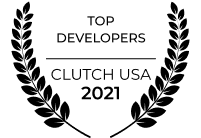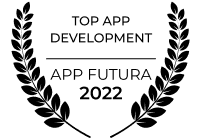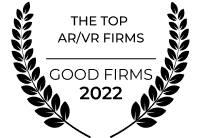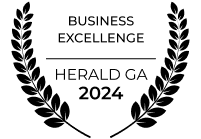Impact: Plan, Build & Grow
“At Kilowott, we help businesses achieve impactful results across all their digital touchpoints. Our approach integrates data-driven insights, innovation, and expert execution to ensure that every project is not just completed, but thrives.”
From the moment we engage, our goal is to make a lasting impact on your business. We go beyond traditional service delivery to shape strategies that foster growth, engage customers, and drive long-term results. Our proven process is rooted in three core stages: Plan, Build, and Grow—each designed to maximize your digital presence and business outcomes.
Insights, Strategy & Design
At the heart of every successful digital transformation is a well-thought-out strategy. We leverage data-driven insights to understand your audience, industry, and competitive landscape. Then, we design custom strategies that align with your vision and business goals, ensuring your digital assets are optimized for maximum impact.
- Market Research: Comprehensive analysis of industry trends, competition, and customer behavior.
- Strategic Roadmap: Tailored, actionable strategies that set the foundation for long-term success.
- Creative Design: Visual and functional design elements that resonate with your audience.
Product Engineering
Execution is key. Our team of engineers takes your ideas and turns them into robust, scalable products that are commercially viable. We integrate your IP assets into a solid IT infrastructure, ensuring your solutions are both innovative and aligned with industry standards.
- Tech Solutions: Seamless integration of the latest technologies to enhance functionality.
- Product Development: Building custom products designed to meet real-world market needs.
- Scalability: Ensuring that your products are built to grow as your business expands.
Omni-Channel Marketing
We don’t stop at planning and building. To grow your business, we craft and execute omni-channel marketing strategies that enhance customer acquisition, retention, and loyalty. Our campaigns are tailored to your target audience, ensuring consistency and high engagement across all platforms.
- Integrated Marketing: Delivering cohesive messages across various channels, from social media to email marketing.
- Customer Engagement: Creating personalized experiences to connect with and retain customers.
- Data Analytics: Using performance metrics to refine strategies and maximize ROI.
Real World Impact
At Kilowott, impact is at the core of everything we do. Every strategy, design, and marketing effort is made with the singular goal of driving measurable growth and business success. From building custom tech solutions to scaling marketing efforts, we ensure every step delivers results that matter.
Real-World Impact:
Our clients benefit from tailored strategies that result in higher customer engagement, increased sales, and improved market position. Whether you’re looking to launch a new product, enter a new market, or optimize your existing operations, we deliver strategies that create real, lasting value.
Skill Builder
SkillBuilder is a leader in B2B sales innovation, utilizing AI and collective intelligence to quickly address complex sales queries. With a focus on empowering sales and product leaders, SkillBuilder helps businesses navigate tough clients and prospects by streamlining the Q&A management process. Founded by Adam Paulisick, Maad Labs drives technological advancements and visionary thinking, challenging the status quo. SkillBuilder transforms challenges into opportunities, harnessing the power of team collaboration and AI to improve sales efficiency and customer engagement. This platform is designed to simplify complex interactions, allowing businesses to deliver tailored solutions and accelerate growth.
Kilowott stood out for clear consistent communication, technical expertise and the flexibility to evolve with changing needs.
Working with Kilowott has been an incredible experience. They stood out for three key reasons: clear, consistent communication, deep curiosity about both technical depth and usability, and the flexibility to evolve with changing needs. Their team was always prepared to tackle complex requirements while ensuring stability, security, and scalability. Kilowott’s entrepreneurial spirit matched my own, focusing on efficient growth and seamless integration. Their expertise and commitment helped transform my vision into reality, making them a true partner in our journey. I am excited for our continued multi-year collaboration and a bright future together!
Adam Paulisick
CEO, Skillbuilder.io
The impact on SkillBuilder.io is evident through the development of an innovative, user-centric web application that aligned perfectly with the project goals. The web application was designed to enhance sales productivity and streamline the onboarding process, resulting in a 30% boost in sales productivity by prioritizing high-value, revenue-generating tasks. Furthermore, the solution improved onboarding efficiency by 45%, allowing teams to quickly integrate and perform at a higher level. The online sales solutions also accelerated the pipeline by 23%, leading to faster conversions and a significant increase in revenue. This web application not only addressed immediate needs but also set the stage for sustained long-term success, allowing SkillBuilder.io to stay ahead in the competitive B2B sales landscape.
Impact
Metrics
Overall
Revenue Growth
Overall
Onboarding Efficiency
Monthly
Organic traffic
Quarterly
Increased in Productivity
Mindset
Minds.et AS is an innovative mental health platform committed to making self-improvement and mental well-being accessible worldwide. Co-founded by Hartvig, Konrad, and Elias Lamo, the platform aims to eliminate barriers and combat stigma surrounding mental healthcare, transforming the global approach to mental wellness. Minds.et offers a diverse range of expert-led courses across psychology, business, and personal development, providing users with valuable resources to enhance their mental health, build resilience, and foster growth. With its global reach and a commitment to breaking down the stigma of mental health, Minds.et is empowering individuals to prioritize their well-being, helping them lead more fulfilling lives. The platform stands as a beacon of hope for those seeking to improve their mental health and personal growth in an accessible, professional, and impactful way.
The team has consistently surpassed expectations and delivered outstanding results.
We’ve had the pleasure of working with Kilowott for a long time, and the experience has been nothing short of excellent. Their communication is seamless, with quick responses and an unwavering dedication to quality. The results speak volumes—the designs are exceptional, reflecting the team's creativity, expertise, and commitment. Kilowott consistently exceeds expectations and has done an outstanding job. We’re excited to continue our collaboration and see what more we can achieve together.
Hartvig Reinfjord
CEO, Mindset Corporate AS
The web application that we developed played a crucial role in Mindset’s growth by enhancing user experience and streamlining operations. The intuitive design improved user navigation and engagement, resulting in higher retention rates and a more satisfying platform experience. The scalable architecture positioned Mindset for future growth, enabling it to efficiently adapt to increasing user demands. Integration of third-party services like payment gateways and social media platforms enhanced functionality, facilitating smoother transactions and interactions. Additionally, by ensuring GDPR compliance and robust security measures, Kilowott helped Mindset build trust with users, contributing to its expanding user base and overall success.
Impact
Metrics
Overall
Revenue Growth
Overall
Onboarding Efficiency
Monthly
Organic traffic
Quarterly
Increased in Productivity
Bomann
BoMann is a leading manufacturer and supplier of high-quality wardrobe furnishing products, catering to a diverse range of stores across Norway, Sweden, and Denmark. With a strong presence in these markets, BoMann operates through its regional headquarters, ensuring seamless distribution and support. The company serves a variety of retailers, including standalone wardrobe and furniture outlets, large furniture retail chains, and its own franchisee locations. Committed to staying ahead of industry trends, BoMann continuously adapts its product offerings and pricing strategies to meet evolving market demands. Their extensive range of wardrobe solutions combines functionality, aesthetics, and durability, making them a trusted partner for retailers looking to provide premium furnishing options to their customers. With a reputation for quality craftsmanship and customer-centric service, BoMann remains a preferred choice for businesses seeking reliable wardrobe solutions in the Scandinavian market.
Their expertise, reliability, and seamless collaboration have been key to our growth and market leadership in Scandinavia.
We've been working with Kilowott for over six years, and their expertise has been invaluable. At BoMann, our made-to-measure sliding doors require complex calculations, and Kilowott built a custom software solution that simplified the process. Their platform allows customers to input exact measurements and receive real-time pricing, making us a market leader in Scandinavia. The collaboration has been seamless—Kilowott understands our needs instantly and delivers solutions quickly. Their commitment ensures we always have dedicated resources available. We’re now on our third version of the platform and continuously evolving with their support. Kilowott’s expertise and reliability have been key to our growth. I highly recommend them as a trusted digital partner.
David Johansen
CEO at BoMann Norge AS
Kilowott developed a dynamic digital solution that streamlined product updates, pricing strategies, and logistics management for over 100 stores. With a fully customizable administration panel, businesses could efficiently manage production, delivery, and store operations. Our solution enhanced customer engagement by 45% and supported scalability with load testing for 80,000 customers and 100,000 orders. By automating processes and optimizing CRM dashboards, we reduced operational costs by over 30%. The offshore delivery model further cut overhead costs, enabling faster time-to-market and cost-effective rollouts. Kilowott’s expertise ensured a seamless digital transformation, driving efficiency, engagement, and long-term business growth.
Impact
Metrics
Scalability
Stores Deployed
Overall
Engagement Growth
Overall
Cost Efficiency
Overall
Business Efficiency
Delmarva Group
Delmarva Group is a dynamic and diverse family of companies that specialize in a wide range of services, from construction and appliance services to financial solutions and garage doors. With a focus on quality and customer satisfaction, Delmarva Group partners with local businesses to deliver expert services across multiple industries, creating long-term value and growth. Their extensive portfolio includes a variety of businesses, each committed to providing exceptional service tailored to meet the unique needs of their customers.
Their team was always prepared to tackle complex requirements while ensuring stability, security, and scalability.
Working with Kilowott has been an incredible experience. They stood out for three key reasons: clear, consistent communication, deep curiosity about both technical depth and usability, and the flexibility to evolve with changing needs. Their team was always prepared to tackle complex requirements while ensuring stability, security, and scalability. Kilowott’s entrepreneurial spirit matched my own, focusing on efficient growth and seamless integration. Their expertise and commitment helped transform my vision into reality, making them a true partner in our journey. I am excited for our continued multi-year collaboration and a bright future together!
Stefan Beachy
Partner, Delmarva Group
For Delmarva Group, our strategic on-page and off-page SEO initiatives delivered exceptional results. Within just one month, we achieved a remarkable 14% increase in organic traffic, driving 1,171 new visitors to their website. By implementing a robust, targeted backlinking strategy, we elevated their website engagement by an impressive 63%, generating 3.25k total clicks and over 42.5k impressions within a three-month period.
This holistic approach not only significantly boosted their organic traffic but also improved their average ranking position to 24.4. Additionally, we achieved an outstanding 7.6% click-through rate, further solidifying the impact of our SEO efforts and enhancing their overall digital presence.
Impact
Metrics
Monthly
Boost in organic traffic
Monthly
Boost in web engagement
Monthly
Boost in click-through-rate
Quarterly
Increased impressions
How we work with you
Working with Kilowott means you’re partnering with a team of experts who are committed to your success. Our approach is collaborative and flexible, designed to meet your unique needs at every stage of your journey.
Our Process:
- Discovery & Strategy: We start by understanding your business, challenges, and goals. Together, we define the strategy that will drive growth.
- Execution & Development: Our team will work with you to bring the strategy to life—whether that’s through design, product development, or marketing execution.
- Optimization & Scaling: Once the groundwork is laid, we help you refine and scale your efforts for ongoing success.
Each solution is fully customized, ensuring your unique business goals are achieved.
Why Kilowott
We are more than just a service provider; we are a strategic partner. With years of experience working across diverse industries, we bring both expertise and creativity to every project. Our commitment to delivering value and measurable impact sets us apart, and we pride ourselves on being adaptable and forward-thinking in a fast-changing world.
What Makes Us Different:
- Proven Results: A track record of delivering successful projects and impactful solutions.
- Full Spectrum Expertise: From design and strategy to engineering and marketing, we offer end-to-end services.
- Commitment to Growth: We focus on long-term success, not just short-term gains.






Let's Talk!
For any queries about Kilowott’s services or solutions, please complete the form below, and we will get back to you soon. Whether you’re looking to discuss a new project, seeking insights on how we can support your business transformation, or simply want to learn more about our approach, we’re here to help.
Our team is eager to connect and explore how we can collaborate to bring your vision to life. We look forward to hearing from you and working together towards achieving your goals.

